 Identifying as a Jew
Identifying as a Jew

Jewish Geography

Jewish Geography
12 min read
Just in time for Purim!
Today, Iran is the world’s largest Shiite Muslim state, with a theocratic regime that espouses religious fanaticism. But religious diversity and tolerance were some of the cornerstones of ancient Persian history.
Before Islam, Zoroastrianism was the official state religion of several major Persian dynasties. Judaism predates Islam in modern-day Iran by over 1,000 years, and Jews are one of the oldest religious minority communities in the country, known until 1935 as Persia (Jews have had a continuous presence there for 2,700 years). The first Jews arrived as Babylonian captives after the fall of the First Temple in 586 B.C.E., when the Babylonian king, Nebuchadnezzar, conquered Jerusalem.
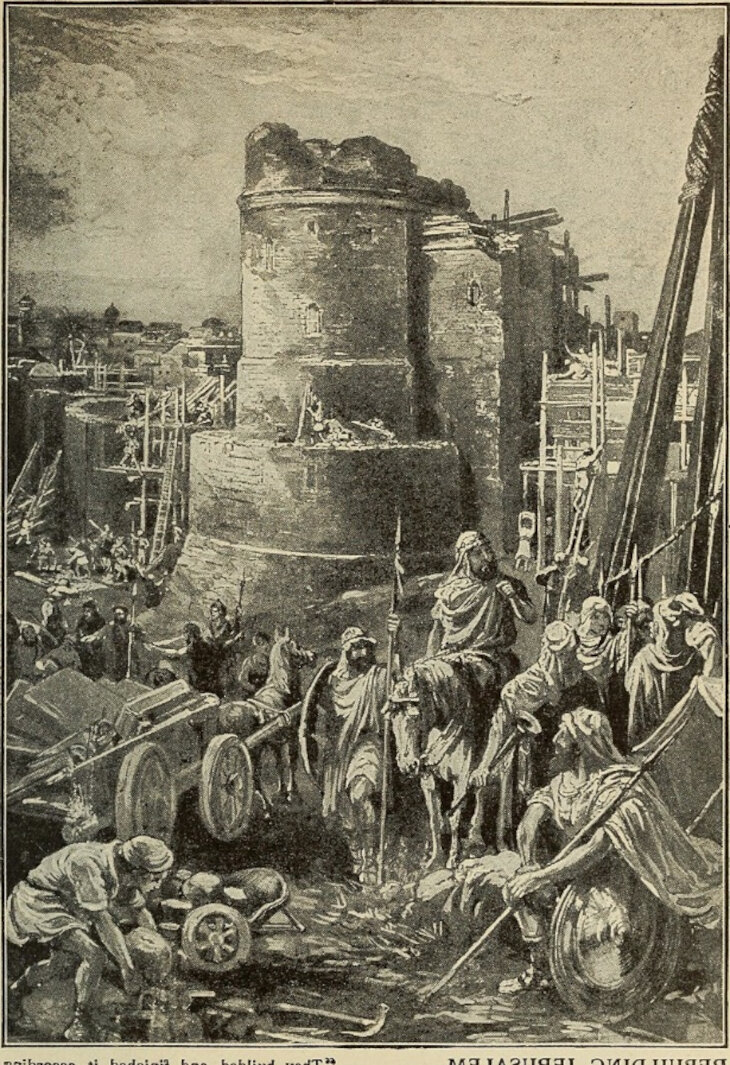 Jews mourning the destruction of the First Temple in Jerusalem. From "Our day in the light of the prophecy," 1921.
Jews mourning the destruction of the First Temple in Jerusalem. From "Our day in the light of the prophecy," 1921.
When Cyrus the Great conquered Babylon in 539 B.C.E., he felt a divinely-inspired responsibility to enable his Jewish subjects to return to Jerusalem and build the Second Temple. The Book of Isaiah says that Cyrus was appointed by God, while the Book of Ezra offers an account of Cyrus’s words upon his decree of building the Second Temple as follows:
“All the kingdoms of the earth the Lord, the God of heaven, has given to me and he has also charged me to build him a house in Jerusalem, which is in Judah.”
Incredibly, Cyrus even sent his returning Jewish subjects sacred vessels from the First Temple (which had been destroyed decades earlier) and a large sum of money for rebuilding purposes. Cyrus, the founder of the Persian Empire, is mentioned in a number of ancient Jewish texts, and by allowing Jewish to return to Jerusalem, he brought the First Exile to an end.
The Cyrus Cylinder, an ancient clay cylinder, has been hailed as the earliest recorded declaration of human rights, and references Cyrus’s decree that all deported people and slaves be allowed to return to their homes.
Cyrus the Great was killed in battle in 529 B.C.E. and his son, Cambyses II, who was less friendly toward Jews, suspended construction of the Second Temple. But the work was resumed under King Darius, who would come to have a very special daughter-in-law, Queen Esther.
 Cyrus the Great allowed his Jewish subjects to return to Jerusalem in order to rebuild the Second Temple.
Cyrus the Great allowed his Jewish subjects to return to Jerusalem in order to rebuild the Second Temple.
Queen Esther was the beloved wife of Darius’s son, King Xerxes, known in the Scroll of Esther as Ahasuerus. Iranian Jews believe that the tomb of Esther and Mordechai is located in the northern Iranian city of Hamadan, and it remains a site of Jewish prayer, especially during Purim, when some Iranian Jews make an annual pilgrimage there.
For centuries, Jewish as well as Muslim and Christian women in Iran have also visited the tomb to pray for fertility. Jewish worshipers often wrote notes and placed them near the tombs, similar to the practice at Jerusalem’s Western Wall.
In recent years, the building has been targeted by antisemites, including an arson attempt in 2020, but damage was not done to the tombs.
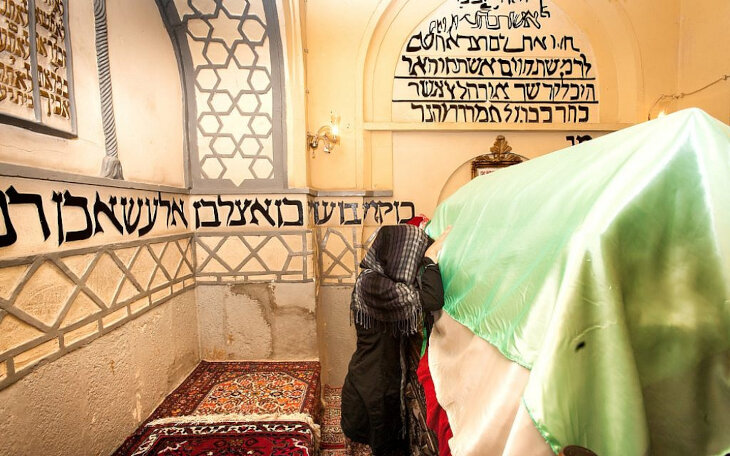 The tombs of Esther and Mordechai in the modern-day Iranian city of Hamedan.
The tombs of Esther and Mordechai in the modern-day Iranian city of Hamedan.
The advent of Islam forever altered life for the Jews of ancient Persia until today. The Muslim conquest of Persia in the seventh century, including a battle in 642 that Arabs called the “victory of victories,” effectively brought an end to the overall safety and tolerance that Jews enjoyed under most of the Persian kings (the battle also ended 2,000 years of Persian independence).
As Islam rapidly spread, Muslim leaders were forced to find ways to deal with non-Muslim communities, including many Jews, some of whom comprised the majority of several cities. As restrictions and humiliations grew, the Pact of Umar made life even more difficult for Jews, who were forbidden from holding government office, serving in the military or even riding white donkeys (a symbol of purity). Persian Jews were also forced to wear yellow armbands; Christians wore them in blue.
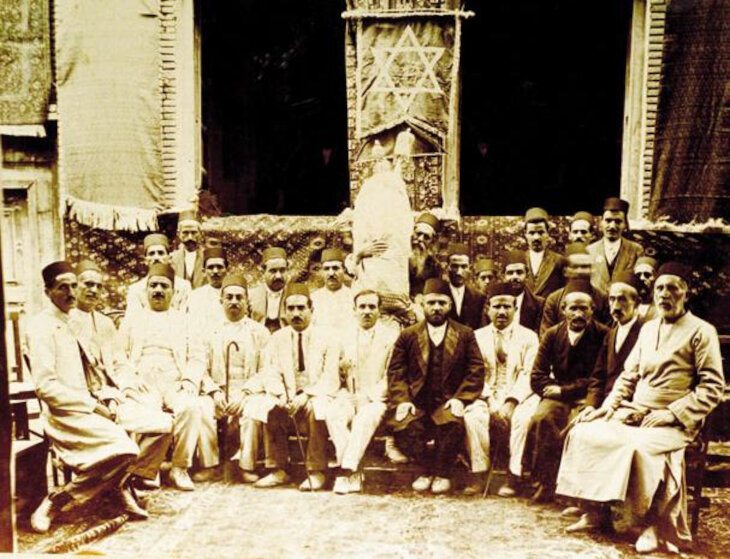 Jewish men in Hamedan, 1918
Jewish men in Hamedan, 1918
When the Safavids came to power in the early 1500s, they introduced some of the harshest practices against non-Muslims and forcibly converted the country’s Sunni population to Shiism. With Safavid rule, Jews and other non-Muslims faced severe discrimination based on false accusations of being “najes,” or ritually impure (thereby posing a threat of physical and ritual contamination for Muslims). Jews were not allowed to leave their homes during rain or snow, lest the wind and water spread their contaminants; they were not allowed to touch foods at bazaars, build their doorways higher than those of Muslims, or even be offered something to eat, drink or smoke in a Muslim’s house, due to their perceived impurity.
As late as the 20th century, Jews who escaped Iran after the 1979 revolution have recounted stories of not being allowed to touch fresh fruit at outdoor markets, for example, or worse, being wrongly accused of touching foods by sellers who demanded that they pay for whatever they had allegedly touched and “contaminated.”
 Shabbat services at Tehran’s Pol-e-Choubi Synagogue in April 2012 (Credit: AP)
Shabbat services at Tehran’s Pol-e-Choubi Synagogue in April 2012 (Credit: AP)
If you’ve ever benefited from the help of a Persian Jewish doctor, lawyer, entrepreneur, teacher, author, or philanthropist, it is partly due to the extraordinary kindness that French Jewish philanthropists offered the Jewish communities of the Middle East over 100 years ago through the famous Alliance Israélite Universelle. The Paris-based international Jewish organization (founded in 1860) believed that Jewish self-sufficiency and self-defense could best be achieved through education and vocational training.
Known simply by Jewish communities in the Middle East as “Alliance,” the organization established French-language schools that offered Jews in countries such as Iran, Morocco, Iraq, Turkey, Tunisia, Syria and elsewhere their first exposure to secular studies, in addition to Jewish education. Alliance was particularly life-changing for Jewish children from poor families, and over 60 Alliance schools were founded in Iran, North Africa and the then-Ottoman-controlled Middle East, including Mandatory Palestine, years before the establishment of the modern state of Israel.
The presence of Alliance schools in Iran effectively helped bring Persian Jews out of poverty and into the educational and vocational opportunities of greater society. It also explains why so many of our parents, grandparents and great-grandparents spoke fluent French!
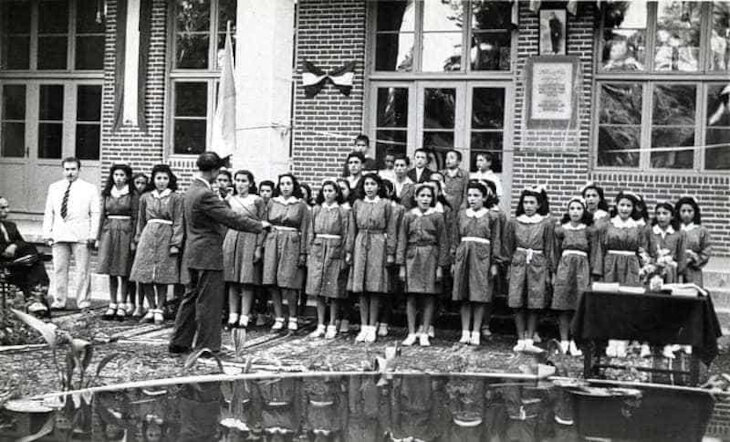 A girls’ chorus at an Alliance Israélite Universelle (AIU) school in Tehran, 1947
A girls’ chorus at an Alliance Israélite Universelle (AIU) school in Tehran, 1947
Today, Iran’s Supreme Leader uses Twitter to deny the Holocaust. But in the early 1940s, a Muslim Iranian diplomat named Abdol Hossein Sardari, who represented the government of the secular Shah (King) of Iran, saved thousands of Jews in Europe using his power at Iran’s diplomatic mission in Paris to issue passports and other travel documents. Through a great deal of painstaking talks with Nazi leaders, Sardari was able to secure exemptions from the notoriously deadly Nazi race laws for over 2,000 Iranian Jews who were in France at the time, claiming that they were Iranian and did not have blood ties to European Jewry.
He was eventually stripped of his diplomatic immunity and consul status. After the 1979 Islamic revolution in Iran, Sardari lost his properties in Tehran as well as his ambassador’s pension. He died in England in 1981 without having asked for any recognition for his life-saving work during the Holocaust. In a 2004 ceremony, the Simon Wiesenthal Center in Los Angeles posthumously recognized Sardari’s sacrifice and humanitarian work. A 2011 book, In the Lion's Shadow: The Iranian Schindler and His Homeland in the Second World War by Fariborz Mokhtari, recounts the amazing details of Sardari’s work.
With Hitler’s troops dangerously close to Iran’s borders and Nazi propaganda (in Persian) infiltrating Iran through daily radio broadcasts, Iran nevertheless offered refuge to over 1,000 Jews, mostly children, from Poland during World War II. Many children (and adults) perished upon arrival in Iran due to illness and malnutrition, which explains why there remains a dedicated Polish section in a Jewish cemetery in Tehran today. The survivors were sheltered in tents on the former military barracks of the Iranian Air Force; the refugee camp eventually became known as the “Tehran Home for Jewish Children.” The Tehran Jewish community, as well as the Hadassah Women’s Zionist Organization and the American Jewish Joint Distribution Committee supported the camp and the kids became known as the “Tehran Children.” The Jewish Agency eventually relocated over 860 children to moshavim (cooperative farming villages) and kibbutzim (collective farms), but the journey from Iran to then-Mandatory Palestine was arduous and exhausting. Several years later, some of those “Tehran Children” fought as youth in Israel’s War of Independence; 35 of them died as soldiers or civilians.
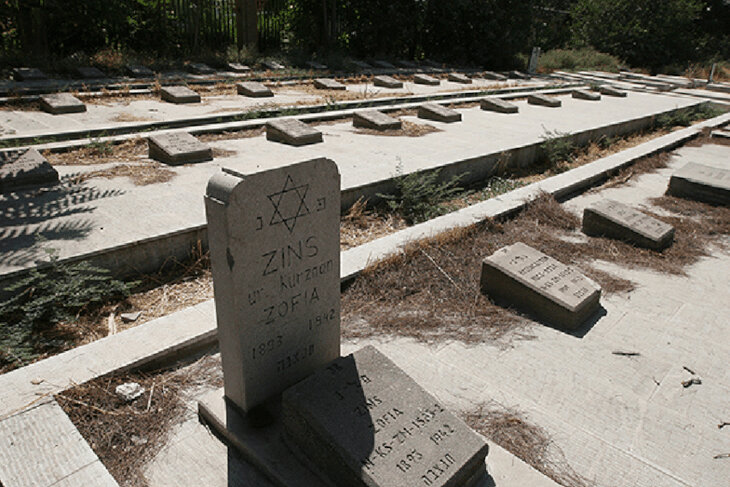 Tehran’s Beheshtiyah Cemetery has a dedicated Polish section. Credit: Hasan Sarbakhshian.
Tehran’s Beheshtiyah Cemetery has a dedicated Polish section. Credit: Hasan Sarbakhshian.
Under the rule of the Pahlavi dynasty, which began with Shah Reza Pahlavi (reigned 1925-1941) and continued under his son, Mohammad Reza Pahlavi (reigned 1941-1979), Iranian Jews experienced tremendous educational, vocational, cultural and social development. Both men sought to establish Iran as one of the most secular and Westernized states in the Middle East. Before the 1979 Islamic revolution that ousted Shah Mohammad Pahlavi and established a fanatic Shiite theocracy led by a radical cleric named Ayatollah Ruhollah Khomeini, Iran’s Jewish population was over 100,000.
But after the 1979 revolution, over 90% of the country’s Jews fled. Those remaining Jews, whether in Tehran, Isfahan, Shiraz, Hamedan or elsewhere, were forced to comply with Muslim mandates that turned Iran into an official Shi’ite theocracy.
Beginning in the early 1980s and continuing today, Iranian females, whether 5 or 50, were forced to wear the hijab, or mandatory Islamic head covering for women; Jewish children at schools all over the country were forced to chant “Death to America!” and “Death to Israel,” even at schools that were founded by Jews before the 1979 revolution; and Zionism became a capital offense, punishable by death. Today, Jews are permitted to run synagogues and Jewish learning programs for youth, but portraits of Ayatollah Khomeini (and after his death, Ayatollah Ali Khamenei, Iran’s current Supreme Leader), as well as artistic renderings of the Shiite prophet, Ali, are usually found in Jewish centers and classrooms, due to the theocratic rule of the regime.
 An Iranian brother and sister dress as Israel and Iran, Purim 1964 (Credit: Light and Shadows: The Story of Iranian Jews)
An Iranian brother and sister dress as Israel and Iran, Purim 1964 (Credit: Light and Shadows: The Story of Iranian Jews)
Ask any Iranian Jew, including those abroad in cities such as Los Angeles, Great Neck, Toronto, Milan or elsewhere, about their favorite Iranian Jewish food and the answer will likely be gondi — chicken or lamb and chickpea-flour meatballs that are eaten on Shabbat and often served in a rich meat, turmeric-filled broth called ab-ghoost.
Gondi is said to have originated among the Jewish community in Tehran, and as meat was expensive, reserved only for Shabbat. The most famous version of gondi is made with ground chicken, minced onion, chickpea flour and a heaping amount of ground cardamom, while other Jewish communities prefer to use cumin or other spices. Often mistaken for “Persian matzah ball soup” outside of Iran, gondi has virtually nothing in common with the Ashkenazi staple, other than the shape of the meatballs, which are usually bigger than matzah balls. Gondi is also served by itself, without broth, often as an appetizer.
And while Purim has become synonymous with Hamantaschen, Iranian Jews have their own Purim cookie, a traditional Persian cookie called Koolocheh. The cookie is also prepared throughout Iran by Muslims in celebration of Persian New Year (Nowruz) and Christians observing Easter. Koloocheh are often prepared with walnuts, dates, cardamon or rosewater.
 Mouthwatering gondi and ab-ghoosht (Credit: Proportional Plate)
Mouthwatering gondi and ab-ghoosht (Credit: Proportional Plate)
Roughly 8,500 Jews remain in Iran (from a population of over 100,000 before the 1979 Islamic revolution), with the largest communities in Tehran and Shiraz. They have access to synagogues, kosher butchers and food, mikvahs and several centers of learning. But the Jews in Iran today are extremely careful not to publicly identify with Israel in any way, as support of Zionism is punishable by death. Habib Elghanian, a wealthy Jewish industrialist and philanthropist, was charged with being a Zionist spy, due to charitable contributions he made to Israeli organizations, and assassinated in May 1979. His shocking death forced tens of thousands of Jews to flee Iran. Over the last four decades, other Iranian Jews have also been falsely accused of spying for Israel; some of them served prison sentences and were eventually freed, while others were not as lucky.
As for Israel, it is home to the largest population of Iranian Jews in the world, with roughly 250,000 Israelis today being descended from Iranian Jewry that left Iran in a first wave of migration to the Jewish state in the early 1950s and a second, smaller wave that escaped Iran during the 1979 revolution and made aliyah. Some of the best “Mom and Pop” Persian food can be found at small, even makeshift stalls run by Iranian Jewish immigrants in cities such as Tel Aviv. Ask for a Purim koloocheh cookie (to complement your hamantaschen) the next time you’re in Israel and spot a Persian restaurant or cafe! Purim Sameach.
Featured Image: Surmeh Kimiabaksh on her wedding day in Hamadan, Iran, 1910. Photo courtesy of the Soomekh family.

Persian Jews also celebrate Persian New Year (Nowruz). Persians of every religion, including Christianity, Baha’i, and Zoroastrianism celebrate Persian New Year (Nowruz).